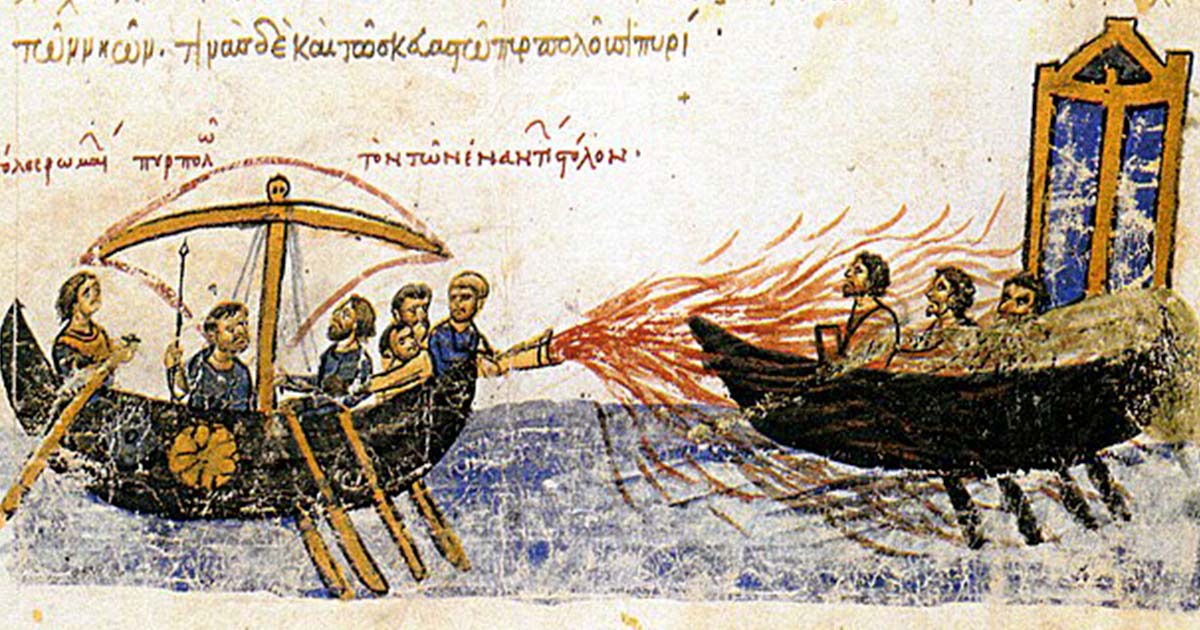Greek Fire Is Every Sailor's Deadly Nightmare (Video)
Investigating the historical narrative of Greek Fire, the ancient Byzantine weapon emerges as a pivotal element during the Arab siege of Constantinople in 678 AD. In a daring counterattack, the Byzantines unleashed Greek Fire, a devastating inferno that engulfed Arab ships in flames.
This formidable weapon not only posed physical peril but also had a profound psychological impact on mariners. Greek Fire, shrouded in secrecy as a closely guarded Byzantine state weapon, proved highly effective. While the exact formula is lost to history, scholars propose theories about its composition.
- A Blazing Weapon: Unraveling the Mystery of Greek Fire
- Was the First Islamic Siege of Constantinople (674 – 678 AD) a Historical Misnomer?
The consensus suggests the involvement of Napa, a naturally occurring hydrocarbon, combined with pine resin for flammability and prolonged burning. The addition of quicklime likely endowed Greek Fire with an explosive quality, enhancing its destructive capabilities on water.
This ancient weapon played a strategic role in naval warfare, instilling fear in adversaries at sea. The historical significance of Greek Fire and speculation about its elusive recipe add layers to its enigmatic legacy.
Top image: A Byzantine ship using Greek fire against an enemy ship. Source: Public Domain

















